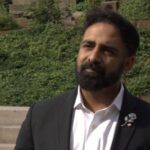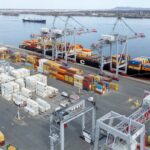In an unprecedented diplomatic development, the G7 Summit in Alberta’s majestic Banff National Park concluded yesterday with leaders issuing six distinct joint statements rather than the traditional comprehensive communiqué that has marked previous gatherings. This shift in approach reflects the increasingly complex geopolitical landscape facing the world’s leading democracies.
As storm clouds gathered over the Rocky Mountains on the final day, leaders from Canada, the United States, Japan, Germany, France, Italy, and the United Kingdom gathered for a final photo opportunity that symbolized both unity and the fragmented nature of their agreements. Prime Minister Justin Trudeau, hosting his second G7 as Canada’s leader, characterized the summit as “productive despite challenging global circumstances.”
“What we’ve accomplished here demonstrates that democratic nations can find common ground even when the global terrain is shifting beneath our feet,” Trudeau told reporters at the closing press conference. “These joint statements represent concrete action on our most pressing shared priorities.”
The six separate statements addressed climate change, artificial intelligence governance, global health security, Ukraine support, Indo-Pacific security, and economic resilience. Notably absent was a unified stance on the ongoing Middle East conflict, which sources close to the negotiations described as a “significant sticking point” that ultimately prevented consensus on a comprehensive final document.
German Chancellor Olaf Scholz acknowledged the departure from tradition, telling CO24 News that “sometimes specific commitments on individual issues are more valuable than broad statements that say little.”
The climate statement reaffirmed the group’s pledge to achieve net-zero emissions by 2050, with Canada announcing an additional $3.7 billion toward global climate financing initiatives. The AI governance declaration established a new international framework for regulating advanced artificial intelligence systems, with all seven nations agreeing to establish dedicated regulatory bodies by 2026.
Economic analysts noted that the fragmented approach reflects deeper divisions among Western powers. Dr. Sarah Reynolds, Senior Fellow at the Canadian Institute for Global Affairs, told CO24 Business: “The absence of a comprehensive communiqué signals both pragmatism and an acknowledgment of fundamental disagreements on certain issues. In today’s polarized world, this may become the new normal for international diplomacy.”
The summit, which cost Canadian taxpayers approximately $400 million according to preliminary government figures, faced criticism from opposition leaders for its hefty price tag and limited concrete outcomes. Conservative Party leader Pierre Poilievre called it “an expensive photo opportunity with little to show for Canadians struggling with affordability.”
Despite these criticisms, the summit did produce tangible commitments, including a $27 billion collective pledge for Ukraine’s defense and reconstruction, and a new pandemic prevention initiative that will establish vaccine manufacturing capabilities in 12 developing nations.
U.S. President Harris emphasized the significance of the agreements, stating, “While we may not have produced a single document, we have demonstrated that democracies can take decisive action on multiple fronts simultaneously. This is how modern diplomacy must function in an era of complex, interconnected challenges.”
The summit’s format raises important questions for future international gatherings. As the global order continues to evolve amid rising authoritarian influence and economic uncertainty, can the traditional consensus-based approach to international diplomacy survive, or are we witnessing the beginning of a new, more fragmented diplomatic landscape?











